

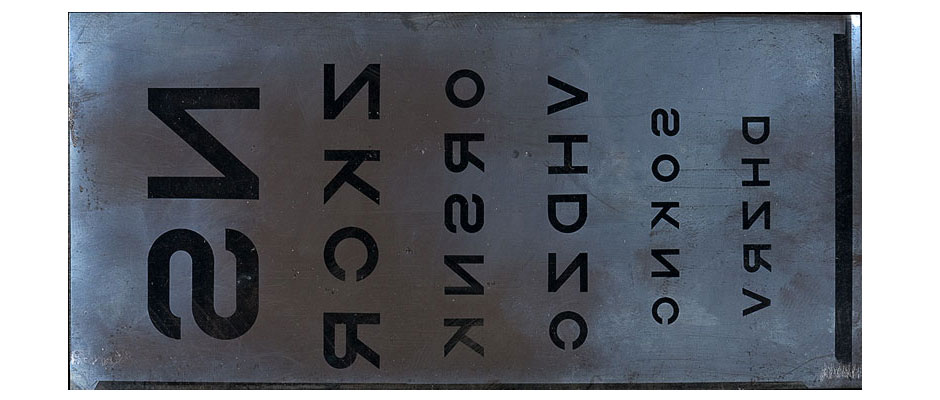
The silver mirroring in this negative was likely caused by its poor quality storage materials.
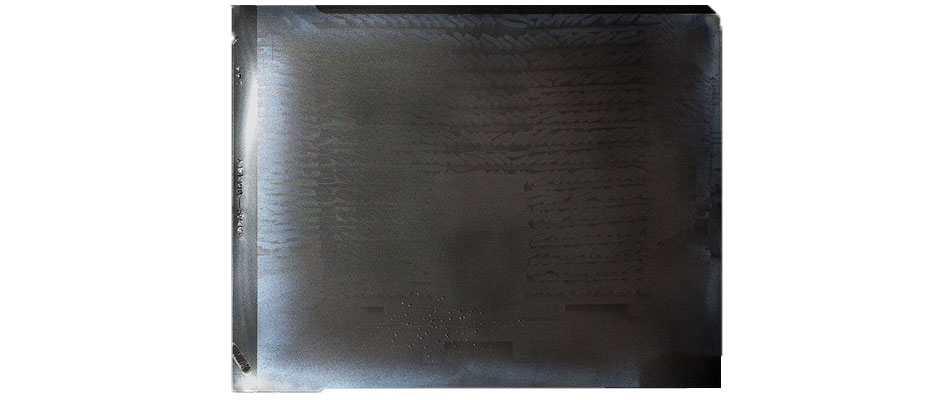
Although silver mirroring is more commonly seen in nitrate sheet films, it is also found in acetate negatives like this one. The most typical presentation of mirroring is around the edges of the film, as seen here. This mirroring was likely caused by air pollutants.

This 35mm nitrate strip demonstrates iridescent mirroring caused by silver corrosion. Iridescent mirroring in the highlights of an image is typical of nitrate film.
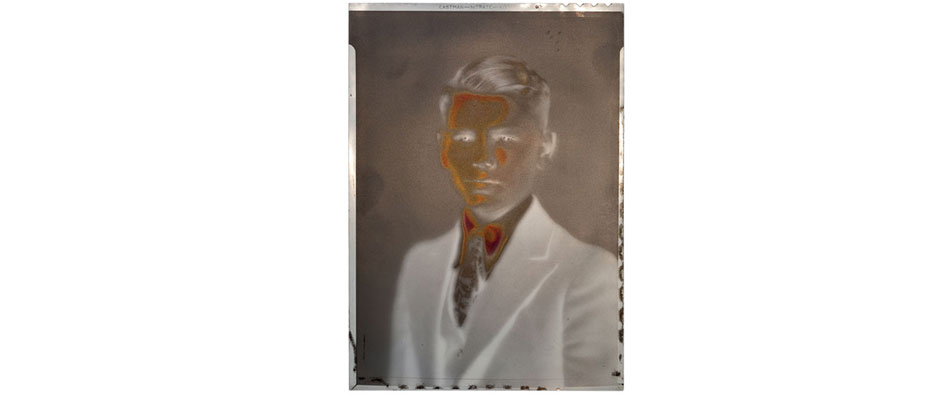
This nitrate negative shows iridescent mirroring in the boy’s face and collar, locations where the most available metallic silver is concentrated. Oxidation with an iridescent appearance is common in nitrate films, but it is not seen in acetate films. It is often accompanied by yellow or amber discoloration, as it is here, another visual manifestation of silver oxidation. Decay of the nitrate support likely contributed to the silver corrosion that caused this mirroring.
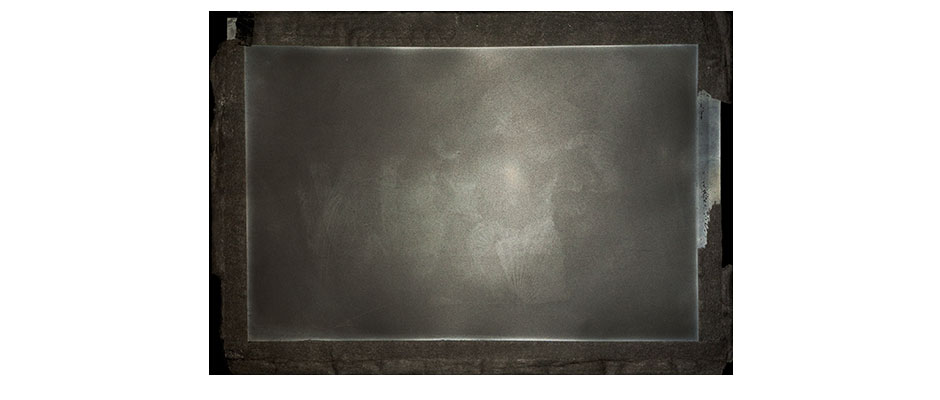
In this acetate negative, the poor quality paper masking and adhesive on the edges of the negative has caused mirroring underneath the masking.
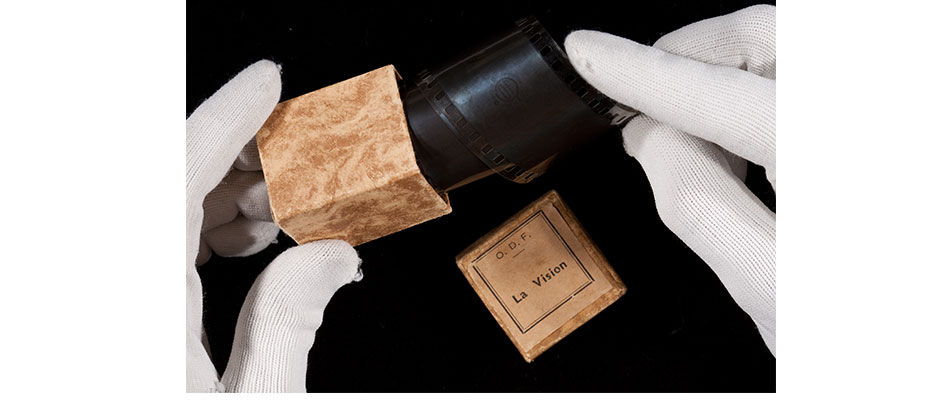
This roll of 35mm acetate film was stored in a poor quality cardboard enclosure, which caused silver mirroring to develop on the roll. The outer wraps of the film, stored touching the inside of the cardboard enclosure, were the most severely affected by mirroring.
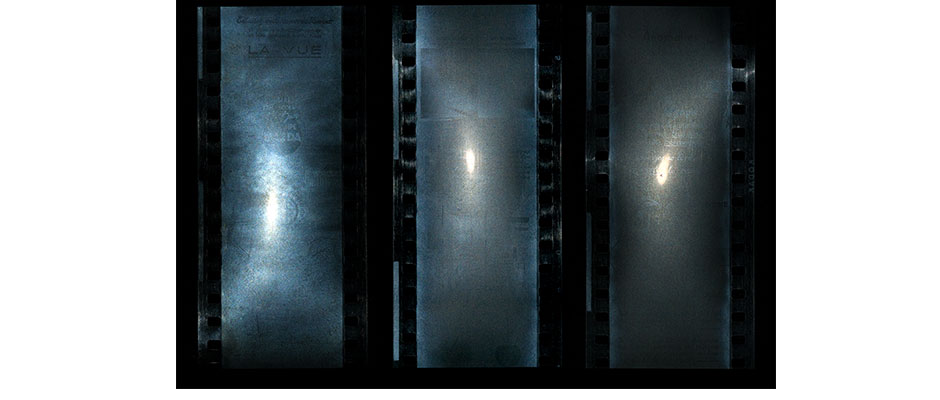
This detail of the 35mm film roll shows the extent of silver mirroring from the outermost wraps of film (seen on the left) to the innermost wraps (seen on the right). The silver mirroring becomes less intense and more focused on the edges of the film as the film is unwound, demonstrating that moisture and contaminants in the cardboard enclosure caused the mirroring on the outer wraps, while the edge mirroring found on the innermost wraps was caused by moisture and air pollutants.

Reference frames of 35mm from Tinting and Toning of Eastman Positive Motion Picture Film (Eastman Kodak, 1918) demonstrate blue metallic silver mirroring likely promoted by contaminants in the acidic paper that encloses the frames.
What it is and what causes itImages on black and white film are typically formed by metallic silver in a gelatin binder. When exposed to a combination of moisture in the environment and pollutants in the air or contaminants in the film’s enclosure, this image silver will corrode.Image-forming metallic silver exists in a filamentary structure. When corrosion occurs, oxidative gases permeate the gelatin and attack small sites of silver, severing them from the filamentary structure and converting them into silver ions. The silver ions migrate through the gelatin and reduce as very small particles of colloidal silver, re-depositing in new locations. When these small particles redeposit near the surface of the gelatin, they produce a reflective metallic sheen with a faintly blue or iridescent appearance called silver mirroring. Mirroring can be clearly discerned on the emulsion side of the film when viewed in reflected light. In many cases, silver mirroring forms along the edges of sheet film or motion picture film, indicating that air pollutants, in the presence of moisture and heat, have been the cause of the oxidation reaction. Silver mirroring can also be caused by poor quality storage materials, and can manifest locally or over the entire image area. |
What you can doMoisture in the air is the critical factor that contributes to the oxidation of the silver image, so prevention of corrosion requires an environment with controlled relative humidity, preferably between 20-50%. Storage of film in an environment free of contaminants and in inert enclosures is also recommended for prevention of silver oxidation. A low temperature environment is preferable, but is not as important in the prevention of oxidation as is the control of relative humidity or reduction of possible contaminants in the film’s environment. |
At Risk
|